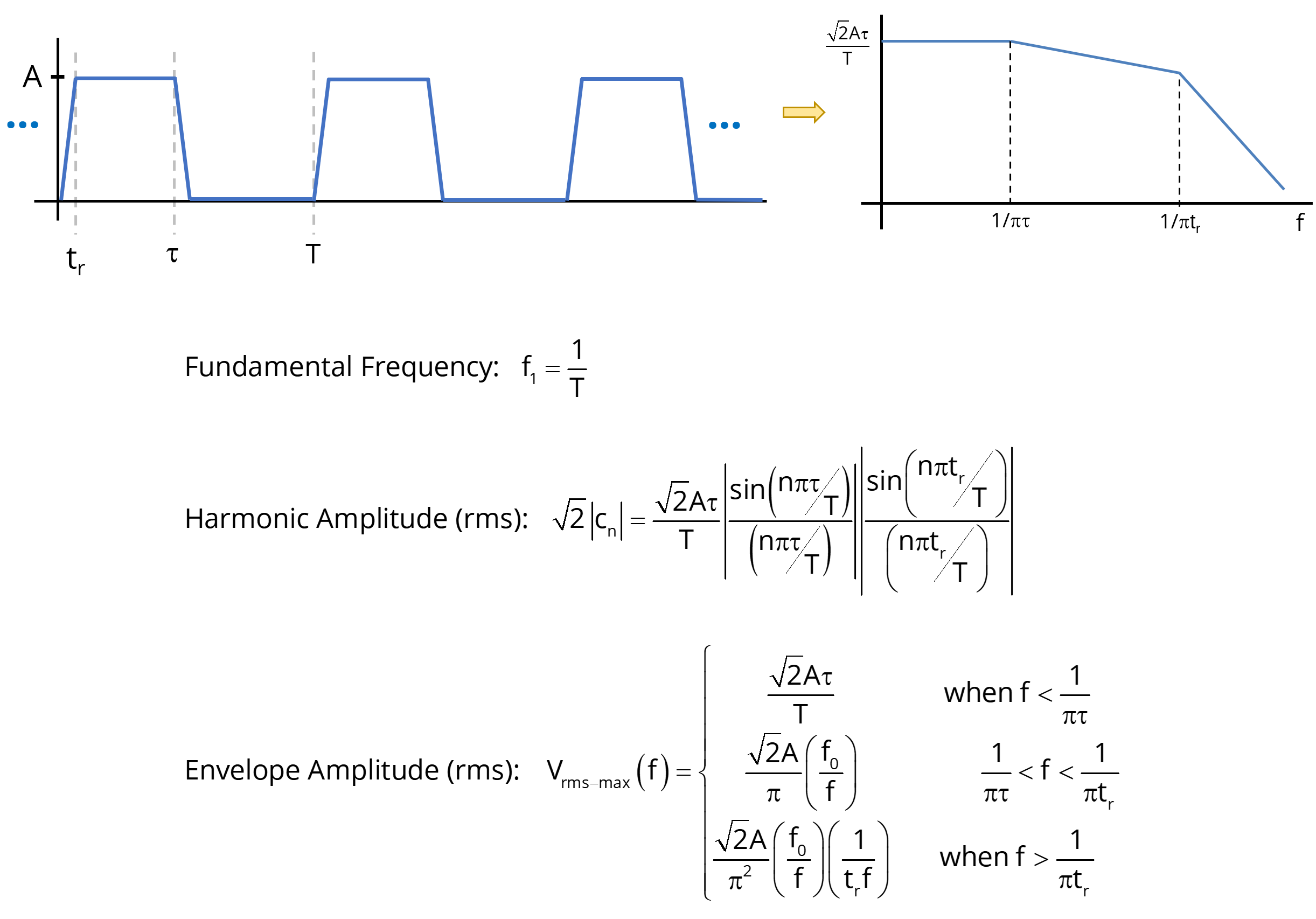EMC Question of the Week: December 28, 2020
The amplitude of the 5th harmonic of a 3.3-volt, 10-MHz clock signal with a 1-ns transition time is approximately

- 600 mV
- 300 mV
- 30 mV
- 60 μV
Answer
The correct answer is “b.” There are several ways to quickly arrive at this solution. Recognizing that the transition time is 1/100 of the period, we know that the envelope of the first 30 – 50 harmonics falls off proportional to the frequency. The rms amplitude of the first harmonic is always about half the peak amplitude of the clock signal, so that's about 1.6 volts. The fifth harmonic is one fifth of that or about 0.3 volts.
Another slightly more accurate option is to plug the parameters of the clock signal into an equation for the amplitude of the nth harmonic, as indicated in the figure on the right. A safer option is to use the equation for the envelope of the harmonic amplitudes (also indicated in the figure).
Finally, if you want to reduce the chances of making a miscalculation, you can use an online harmonic calculator like the one on the Harmonics of a Trapezoidal Waveform calculator on the LearnEMC website.
Have a comment or question regarding this solution? We'd like to hear from you. Email us at
